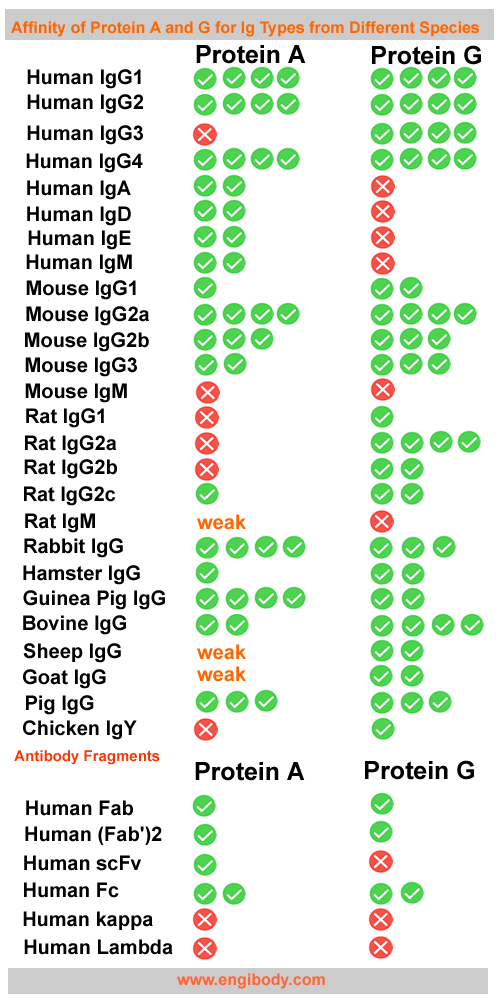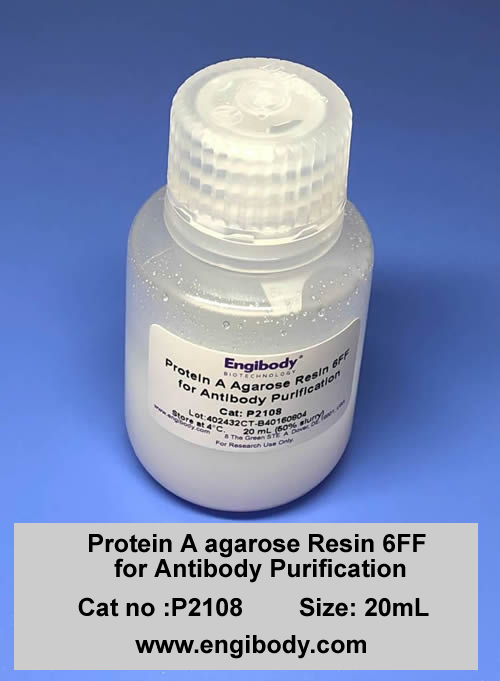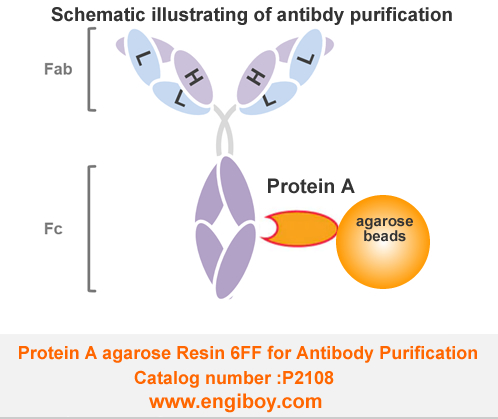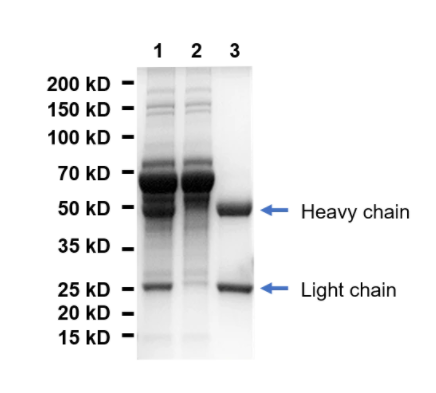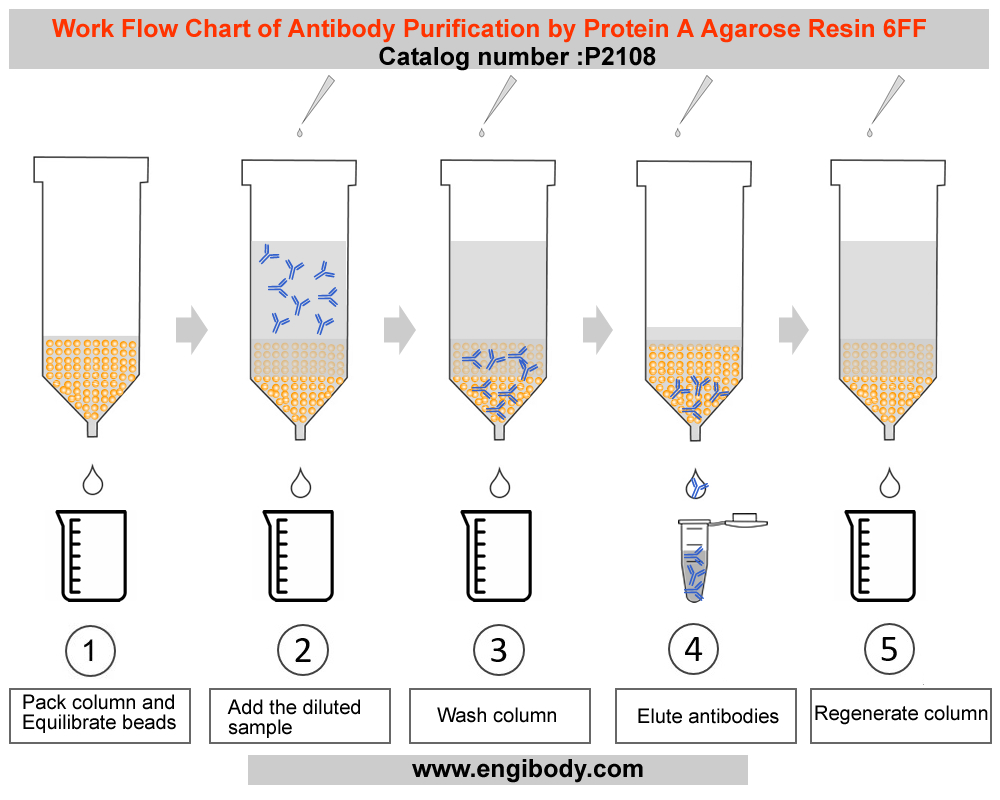Protein A Agarose Resin 6FF is a high-performance affinity resin for antibody purification that is available as bottled agarose beads, pre-packed columns, and complete IgG purification kits.
Protein A Agarose Resin 6FF consists of purified recombinant Protein A that has been covalently immobilized at high density onto high-quality crosslinked 6% beaded agarose. Among the many available varieties of immobilized Protein A affinity resins, this one provides the most versatile combination of chromatographic features for high yield and high purity purification of whole IgG from mammalian serum samples. The agarose beads have physical and chemical properties suitable for many affinity purification systems. Accordingly, Protein A Agarose Resin 6FF is offered in several convenient package formats, including bottled resin slurries, prepacked columns, complete purification kits.
Protein A is a cell wall component produced by several strains of Staphylococcus aureus. The 46.7kDa-protein consists of a single polypeptide chain that is essentially devoid of carbohydrate. Native Protein A contains four high-affinity (Ka = 10^8/mol) binding sites that are capable of interacting with the Fc region of IgG-class antibodies from selected mammalian species. IgG-binding function is optimal at pH 8.2, but efficient binding also occurs in neutral and physiological buffers (pH 7.0 to 7.6).
Compared to its alternative (Protein G), Protein A provides the highest binding capacity for subclasses of IgG from rabbits, pigs, dogs and cats. Protein A also has higher binding capacity for human IgG, except for IgG3, which it binds weakly. Protein A binds weakly to mouse IgG1 and is not recommended for most applications with that antibody isotype.
